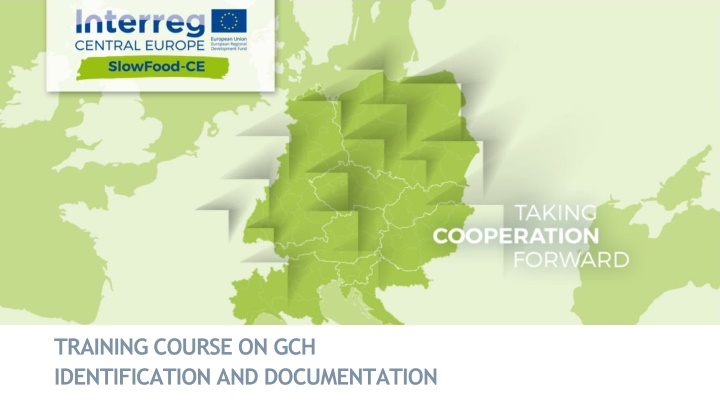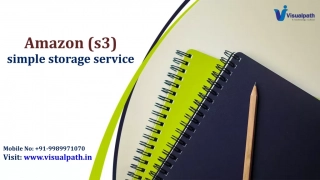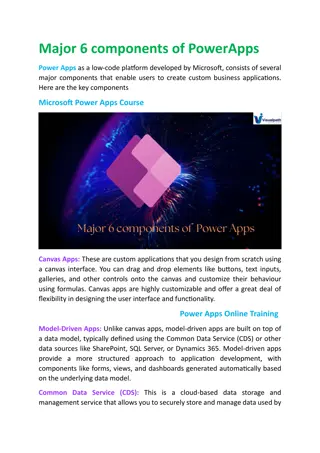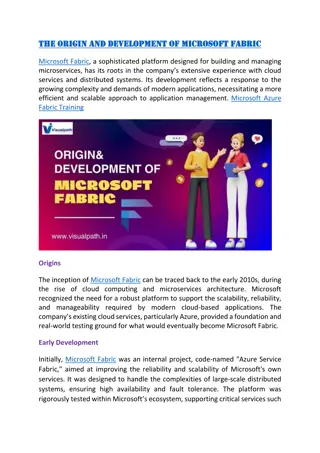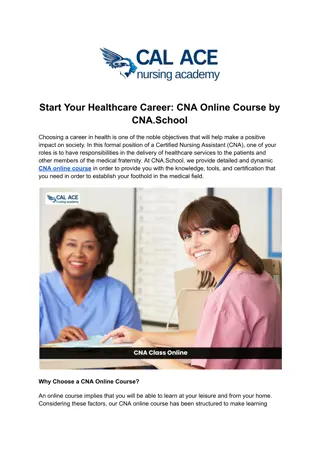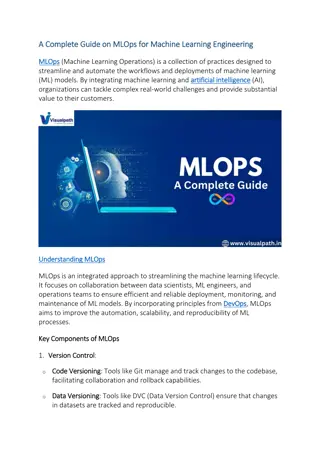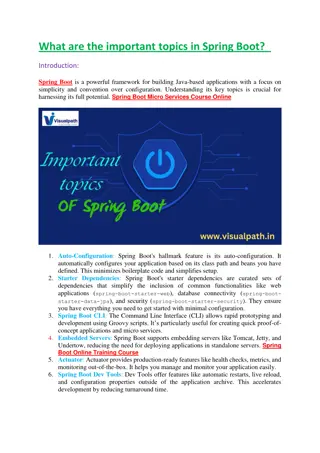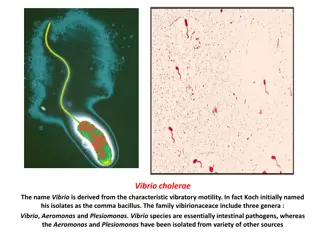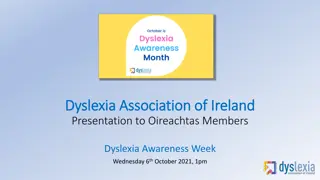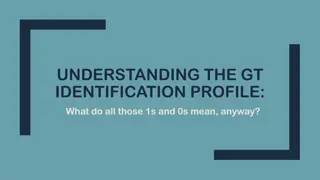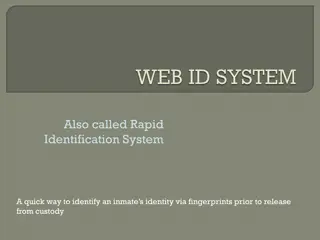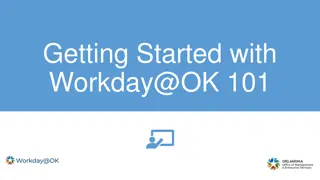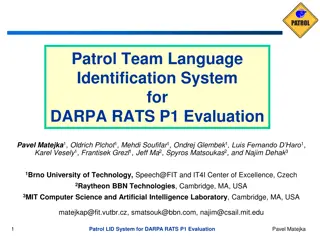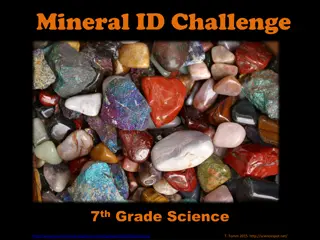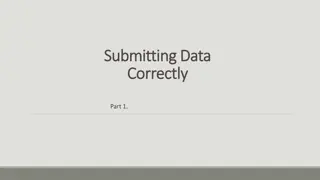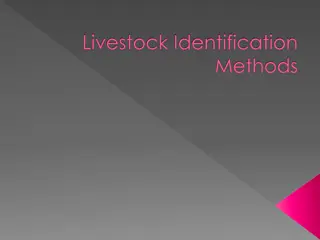Training Course on GCH Identification and Documentation
Benchmark theoretical framework in ethno and biodiversity mapping for local gastronomic heritages. Learn desk and field research best practices. Explore the importance of ethnodiversity and biodiversity in food practices.
Download Presentation

Please find below an Image/Link to download the presentation.
The content on the website is provided AS IS for your information and personal use only. It may not be sold, licensed, or shared on other websites without obtaining consent from the author.If you encounter any issues during the download, it is possible that the publisher has removed the file from their server.
You are allowed to download the files provided on this website for personal or commercial use, subject to the condition that they are used lawfully. All files are the property of their respective owners.
The content on the website is provided AS IS for your information and personal use only. It may not be sold, licensed, or shared on other websites without obtaining consent from the author.
E N D
Presentation Transcript
TRAINING COURSE ON GCH IDENTIFICATION AND DOCUMENTATION
Training course on GCH identification and documentation Course aims Benchmark theoretical framework: Ethno and biodiversity Mapping Desk research Field research Best practices and useful info
Course aims Training aims to provide the benchmark technical framework and methodology for guiding the mapping of local gastronomic heritages, the first phase in the development of the Slow Food- CE: Culture, Heritage, Identity and Food project. The training course is addressed to people who, at a local level, carry out the mapping work of gastronomic heritages of towns and cities that are part of the project, but also for offering contents, tools and practical instructions for investigating gastronomic cultural heritages to various categories of users: institutions, enterprises, professional associations, civil society and so on.
Training course on GCH identification and documentation Course aims Benchmark theoretical framework: Ethno and biodiversity Mapping Desk research Field research Best practices and useful info
Benchmark theoretical framework The project will work from an ethno-anthropological perspective, collecting life stories and testimonies with special attention to food and food culture. The last few years have seen the consolidation of gastronomy within a scientific framework with the result that today we speak about gastronomic sciences as the knowledge and understanding of all that relates to man as he eats (Brillat-Savarin, 1825). In other words, holistic knowledge, defined by new theories and methodologies combining many economics, from history to law from agronomy to chemistry. From this standpoint, centre stage in the world s problems has been taken by the fundamental role of farming communities, defenders of ethnodiversity and biodiversity in the face of the cultural and crop homogenization imposed by globalization. subjects, from anthropology to
Ethnodiversity The term refers to the cultural diversity that characterizes the different human communities that populate Planet Earth. The main elements that combine to define the concept of ethnobiodiversity are: languages and dialects kinship systems organization of family life religions, myths, rites food practices
Biodiversity The term refers to the diversity of life at various levels, from the simplest (genes and bacteria) through plant species to the most complex (ecosystems), all of which intersect, influence each other and evolve. Biodiversity enables plants and animals to adapt to climate change, to attacks from parasites and diseases, and to unforeseen circumstances. A biologically various system possesses the antibodies to react to harmful organisms and re-establish its own balance. A system based on a limited number of varieties is more fragile. Today the tendency towards the globalization of consumption contributes substantially to biodiversity loss in the broadest sense of the term, namely the loss of local areas, traditional cultures handed down for generations, knowledge of plant and animal species, variability of foods and food preparations, knowledge of the edible, nutritional, medical, cosmetic and many other properties associated with the different animal and plant species.
Training course on GCH identification and documentation Course aims Benchmark theoretical framework: Ethno and biodiversity Mapping Desk research Field research Best practices and useful info
Mapping A ethnobiodiversity with aspects of biodiversity has been developed for full in-depth analysis of the different local contexts that are taking part in the Slow Food-CE: Culture, Heritage, Identity and Food project. special mapping technique supplementing aspects of It provides methods and tools useful for the identification of the immaterial cultural heritage represented by local food. The technique is inspired by the consolidated one known as cultural mapping and refers to the identification of everything to be found in an urban and peri-urban area which is associated with traditional food production and consumption, and thus represents a cultural resource worthy of valorization.
Mapping Objectives IDENTIFYING and DOCUMENTING the gastronomic cultural heritage as a driving force of local development. More specifically: identifying the traditional cultural and agricultural and food resources of local areas; evaluating their potential in terms of preservation of the local gastronomic cultural heritage; evaluating their potential in terms of a local dynamic that is virtuous from the sociocultural, environmental and economic standpoint.
Mapping Objects traditional agricultural and artisanal food products places of production, distribution and consumption trades and skills production and consumption practices/techniques production and consumption tools Phases 1. Desk research 2. Field research
Mapping The process Field Research Field Research Mapping Data diffusion Mapping summary Desk Research Identification of key witnesses Tools: Bibliographical, photographic, audiovisual and iconographic sources and consultation thereof Tools: 1. Tools: 1. Tools: 1. 2. Tools: E-platform Investigations/consult ations with LWG Practical instructions on how to conduct interviews Questionnaires/inte rview templates Interviewer s handbook Video interviews Compiled interview forms 2. 3. Outputs: identification criteria list of witnesses Outputs: Desk Research Report containing: bibliography and list of other documentary sources description of local context from a historical, cultural, economic and social standpoint Outputs: Video interviews Outputs: Field Research Report containing: Inventory of the immaterial cultural heritage to be valorized Evaluations and conclusions for Pilot Action and Transnational Strategy Outputs: Model for the mapping of GCH Compiled interview forms
Training course on GCH identification and documentation Course aims Benchmark theoretical framework: Ethno and biodiversity Mapping Desk research Field research Best practices and useful info
Desk Research The phase prior to Field Research consisting of the reconstruction of the historical, cultural, social and economic context of the local area in question using the sources collected. It is carried out by collecting bibliographical, archival, photographic, audiovisual and iconographic information available in libraries, archives, universities, study centers, art galleries etc. The first reflection concerns the choice of local area to analyze (the size of which may vary according to country) on the basis of available resources and capacity to involve local actors directly. Secondly, desk research must be functional to the field research, giving priority to functionality and exhaustiveness. The sources identified must be precise and useful.
Training course on GCH identification and documentation Course aims Benchmark theoretical framework: Ethno and biodiversity Mapping Desk research Field research Best practices and useful info
Field Research This is the practical phase of mapping. According to the methodology suggested, it consists of preparing and producing video interviews to document the oral and gestural knowledge and skills of the gastronomic cultural heritage in the local areas in question. Interview preparation Interview production Interview cataloguing Recording Editing Identification of interviewee Interview questionnaire Summary of data collected
Interview preparation Identification of interviewee People to interview Custodians of traditional skills and subjective/individual narratives; some may also be witnesses of particularly important historical events and social phenomena. In the case of cultural gastronomic heritages, the following categories may reasonably be considered as special interlocutors* cooks and chefs Farmers livestock breeders Fishers Artisans Processors sellers of agricultural and gastronomic products teachers in agrarian/hotel management schools, university lecturers and researchers in agriculture and animal husbandry local historians
Interview preparation Interview questionnaires After choosing a suitable time and place for the interview, the researcher asks the interviewee questions and collects their answers. There are various interview models, which differ according to degree of freedom of question and answer. The chief models are: structured, semi- structured, unstructured or free. Here we suggest a semi-structured interview in which the interviewer uses a list of questions, which serves basically as a guiding compass to ensure that the conversation remains focused on the central theme. Questions are open and the purpose is to investigate an event, situation, fact or product as deeply as possible; they should not follow a fixed order but rather the flow of the discussion, adapting to the situation and the direction thereof with the utmost flexibility.
Interview preparation The handbook of the good interviewer Don t press the interviewee with too many questions. Don t interrupt when he or she is speaking Especially if they are elderly people, leave interviewees time to reflect before asking a new question. Wait a second or two as, often, an interviewee may recover his or her thread and complete the answer with further precious reflections. Listen! An aptitude for listening is fundamental, especially during an interview. Interviewees are giving us their time, their memories and recollections: we have to listen to them and give them the time they need to formulate the story we have prompted. Welcome the interviewee s story with curiosity and honesty, even if the answer may be different from the one you expected: reality is often different from the way we imagined it! We shouldn t put into the interviewee s mouth the words we want to hear to fulfill our expectations. Don t give the interviewee the impression you re in a hurry: when you organize the interview leave yourself plenty of time. Interviewing people in-depth about the way they have lived their own biographical and professional lives takes time, say an hour or an hour and a half. Switch off your phone before you begin the interview!
Interview preparation How many interviews should be conducted? It is possible to think in terns of about 20 interviews, though this is just a rough estimate, which may be increased or decreased according to the documentation needs of each local context. Hypothetically speaking, to carry out qualitative research it is possible to document the gastronomic tradition of a city and its local area through interviews with 4/5 agriculturists (market gardeners, vine dressers etc.) 2/3 cooks/restaurateurs 1/2 livestock breeders 1/2 cheesemakers 1/2 pork butchers 2/3 bakers, confectioners 3/4 food sellers: market vendors and owners of food shops, caf s, groceries and so on.
Interview preparation How long should an interview normally last? Though interviews may vary in length, we recommend that you devote about one hour, which corresponds to a video of about 30/40 minutes, to each interviewee. The length of each single interview should also be considered in relation to the total of the interviews produced. The final aim is to achieve consistent, communicatively effective mapping. Subtitles English subtitles are optional but we recommend their use. It is, however, compulsory to accompany each interview with a summary and a time code in English (see interview form 1).
Interview production Recording Note for the facilitator: show the video tutorial of the Moodle course Editing
Interview cataloguing To catalogue each interview and video file, it is necessary to compile data about the interviewee (personal details) and his or her testimony (circumstances, content etc.) in interview form 1 In addition, if an interview is associated with a specific product or production technique, it is also necessary to compile interview form 2, which comes in three versions 1. 2. 3. Product of animal origin Product of vegetable origin Processed product
